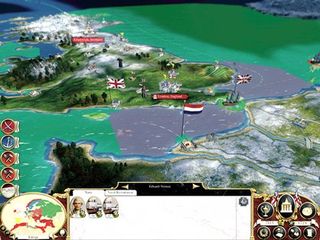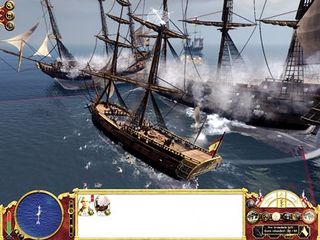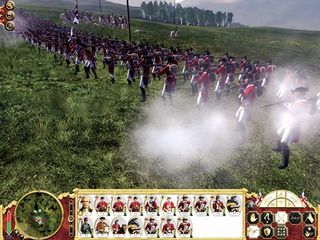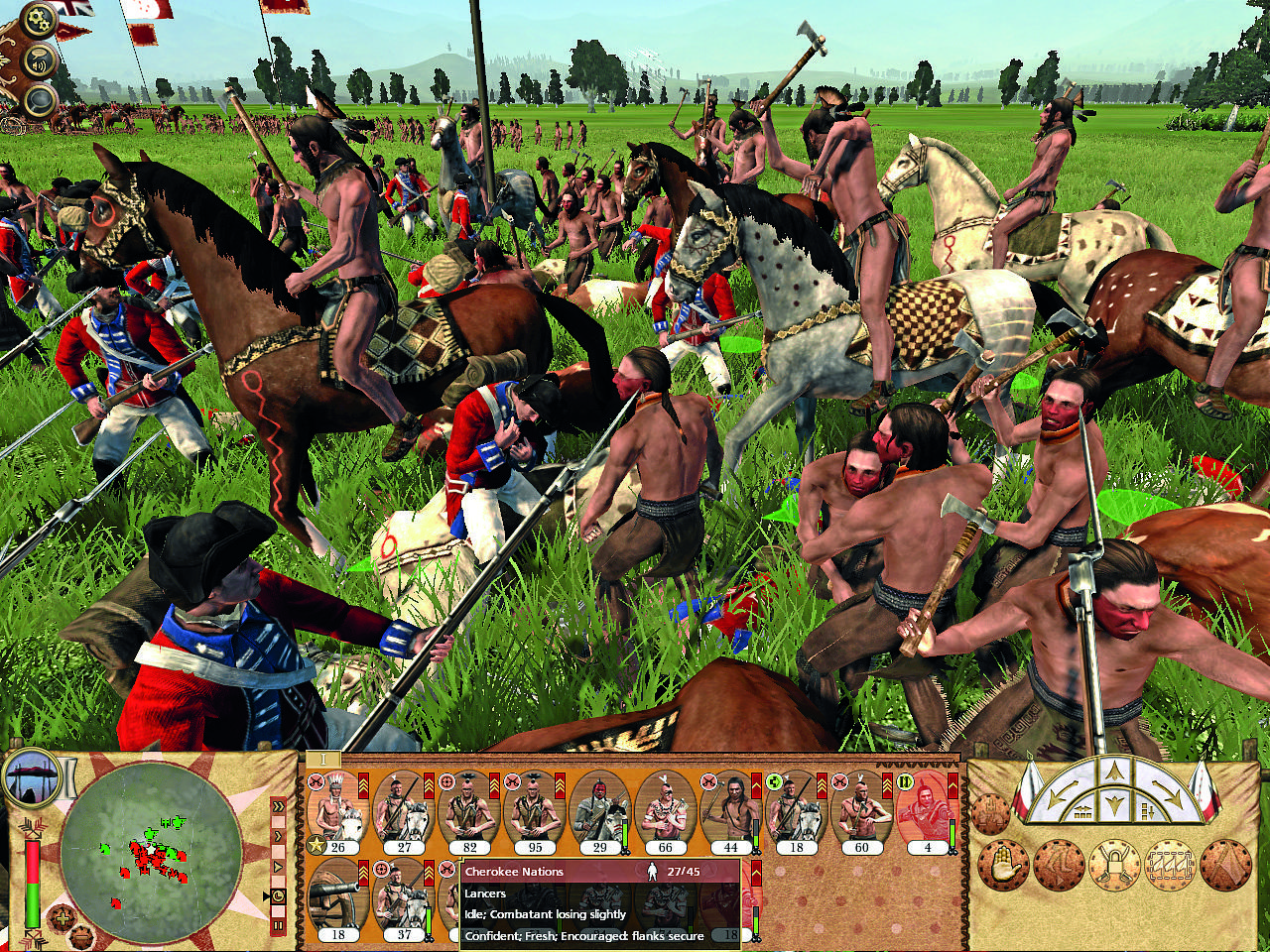Why you can trust GamesRadar+
Not perfect, perhaps, but certainly more robust. The harder AI has been an absolute bastard to take on toe-to-toe. Enemy generals work to split your ranks, or to funnel you into the firing line of cannons, or to avoid your flanking tactics. They’ll drive through your lines and then fan back around, attempting to split and isolate your troops. When they’re heavily entrenched, firing from the windows of buildings and harrying your troops with veteran skirmishers, it starts to feel like a more mature game.

The nature of war has changed with Empire’s 18th century setting. Firearms are now standard on the battlefield, and only a few units – certain cavalry, pikemen, some of the foot-soldiers on undeveloped nations – go without gunpowder weapons. Line infantry, the staple unit of European armies, now form a huge part of your army. This is no longer a game of massed cavalry charges. It’s about judging firing arcs and reloading times, and coaxing enemies into a killing field. Yes, a good cavalry charge will solve all kinds of problems, but the tactics are there to counter them. Bayonet-armed infantry forming defensive squares will make short work of a cavalry unit. It’s the mobile artillery -horse-drawn cannons -that can completely throw the balance of any given battle- particularly when you’re faced with sieges. The possibility for battlefield variation is more wide open than ever, and consequently even more engaging.
However, we’re not going to be uncritical. The most crucial problem for us is that the new real-time naval battles, although spectacular, are somewhat unconvincing. Naval combat is a major new addition to the series, which previously featured no real-time ship-to-ship conflict. In Empire you can produce fleets in your ports and then direct them into skirmishes on the high seas. From tiny sloops to ornate high-end flagship galleons, the full range of 18th century naval technology is afloat. The detail on these ships is astonishing: you can zoom right in to watch sailors taking pot-shots at the crew of nearby enemy ships, or see the many decks of guns frenziedly reloading between volleys.

Frustratingly, however, you never feel as if you’re actually fighting a major fleet engagement. The ships do not feel like sailing ships, and although the principles of broadsides, tacking against wind and ship-boarding are all in place, they never coalesce into strategy. The potential for micromanagement just seems to cause the battles to descend into a chaos, and it’s comparatively laborious alongside a land battle. Additionally, fighting a battle with more than just a handful of ships is ludicrously daunting, and rapidly becomes a chore.
In exactly the way that suspension of disbelief is absolute in the land battles, it disappears at sea. It feels as if these sea battles needed to be more like simulations, with the battles playing out and allowing you to make minor adjustments, rather than the peculiar battle-map remixing they’ve turned out as. We spent two long evenings trying to master the art of large-scale fleet combat, but it became clear it was never going to be digestible. While the land battles have been honed to the point of being unmissable, we found ourselves rapidly defaulting to auto-resolve fleet conflicts. If the rest of the game wasn’t quite so triumphant in its execution then this maritime misstep might have genuinely impacted on our verdict. As it is, we think there’s a reason why there are so few naval combat sims, and evenfewer successful ones. It’s a deeply difficult task, and Creative Assembly have done the best that their game template would allow.

Nor could we really be without this new facet, because the high seas are so utterly integral to this new game. Leaving the ship battles unseen would not be acceptable, especially when naval engagements are crucial to your economic prowess. This is a game that allows you to play your own hand in all things – and that had to include the naval battles too. We’re glad of this new aspect of the game, but even more pleased we are usually able to skip it. There are other troubles too – the AI turns remain achingly slow, and the micromanagement of things such as regional taxes still isn’t quite clear or flexible enough to make fiddling around down there truly satisfying.
Nevertheless we cannot do anything other than play Empire, compulsively, obsessively. It’s not even a period of history we’ve previously taken much interest in, and we’ve still been overwhelmed with desire to keep on spreading our flag across this glorious, beautifully detailed map. Hell, you’re lucky to get a review at all. If we had our way we’d have been getting on with that land-invasion of India right now, which was well overdue. We’ve only just got around to dealing with that particular situation, thanks to getting caught up in Baghdad for the best part of a decade.

A game could be a high scoring instance of a ludicrously niche genre that only a handful of people will ever get a kick out of, and therefore would not earn the Must Buy. Occasionally though, we give a high score to an instance of a ludicrously niche genre that everyone will get a kick out of. That’s precisely why Empire: Total War gets a Must Buy award.
Mar 6, 2009
More info
| Genre | Strategy |
| Description | Immense and intensely detailed, Empire: Total War is a must buy for strategy gamers. |
| Platform | "PC" |
| US censor rating | "Teen" |
| UK censor rating | "16+" |
| Release date | 1 January 1970 (US), 1 January 1970 (UK) |

Ahead of GTA 6, Take-Two CEO says he’s “not worried about AI creating hits” because it’s built on recycled data: “Big hits […] need to be created out of thin air”

Getting Over It creator Bennett Foddy threatens the world once again: If you want Baby Steps to be a brutal rage game, "you can inflict that on yourself"

A Simpsons Hit and Run Remake will probably never happen – and I don't want it to











